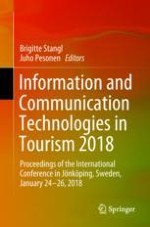2018 | OriginalPaper | Chapter
Factors Influencing Customers’ Intention to Use Instant Messaging to Communicate with Hotels
Authors : Soey Sut Ieng Lei, Ksenia Kirillova, Dan Wang
Published in: Information and Communication Technologies in Tourism 2018
Publisher: Springer International Publishing
Activate our intelligent search to find suitable subject content or patents.
Select sections of text to find matching patents with Artificial Intelligence. powered by
Select sections of text to find additional relevant content using AI-assisted search. powered by
